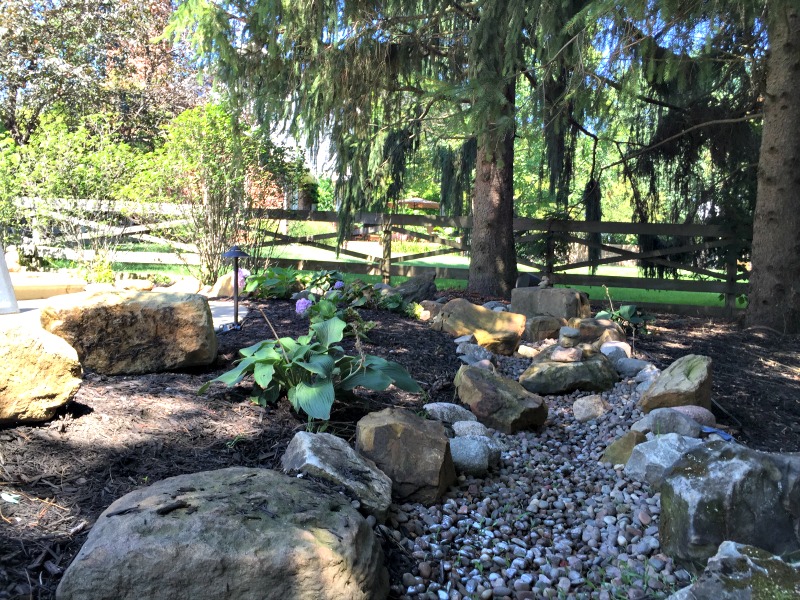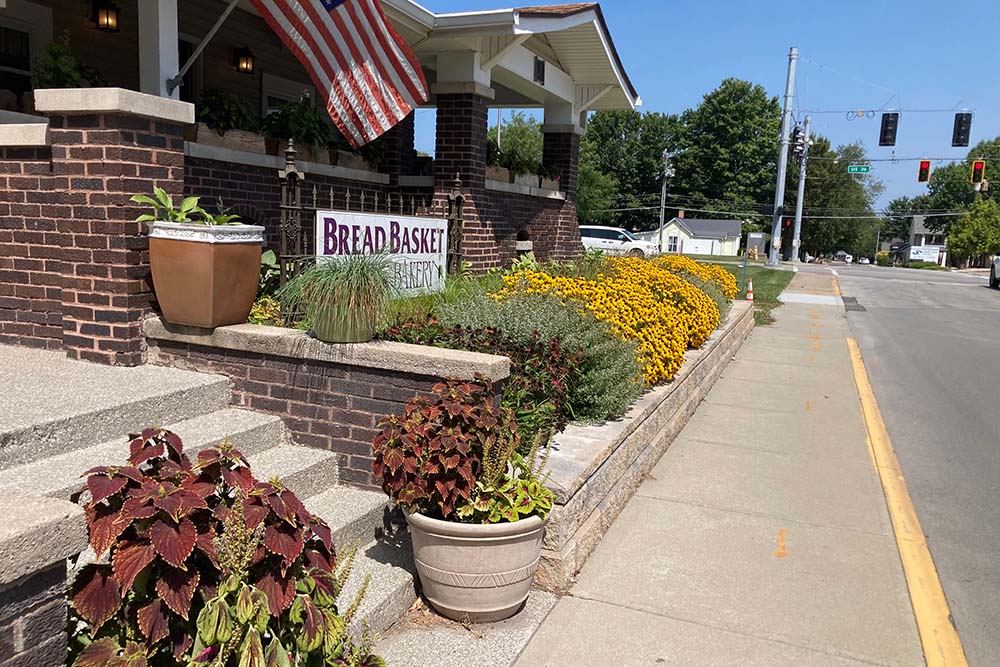Standing water, especially around your house, is not what you want to see in your landscape. Granted, after heavy rain you will always see some water as the ground can only hold so much, and it’s just a fact that during rainy periods the soil will usually be soggy. As long as standing water goes away within 48 hours of dry weather, your landscape is probably fine. However, if you notice parts of your yard turning into a swamp after only light rain, or if water never goes away, you likely have drainage issues in your yard.
There are many reasons why your landscape might have a difficult time absorbing water: a high percentage of clay soil content, a high water table, improperly graded soil, downspouts emptying closer than 5 feet to your house, or clogged gutters and downspouts. Here we provide a cheat sheet of landscape drainage issues and solutions, both standard and creative.
Managing Gutters and Downspouts
Main Issue: Standing Water Near Your House
If you are seeing standing water next to your home, the problem may be water from your gutters is leaking out directly next to your house and gravity can’t pull it away.
- Clean Gutters and Downspouts: Your first course of action is to make sure your gutters and downspouts are clean and not broken. These mini aqueducts are easily clogged with leaves, seeds and other tree debris. Gutter covers can also help keep gunk out, and reduce seasonal cleaning.
- The Right Distance: Gutters should empty 5-6 feet away from your house. If they are set up to drain closer than that, well, you’re basically watering your house’s foundation. Not good.
- Getting Water Across the Driveway: Many downspouts empty next to the driveway, and since water can’t go through concrete, it can tend to sit next to your house instead. Options vary in these instances; you can bury a drain pipe with a pop-up on the end that shuttles water under your driveway or along it to empty far away from the house. You can also use a collection box.
Installing French Drains
Main Issue: Any Standing Water in Your Yard
French drains can solve various drainage issues in your yard by creating a space for water to easily soak into, then be redirected via pipe elsewhere. Typically, you build a trench in the middle of your rain swamp, lay a perforated, corrugated pipe down, fill it over with gravel, then cover it all with soil. Water can now pass more quickly through the gravel, falling into the pipe and draining away from your yard.
Though we can construct French drains, Eagleson Landscape Co. can also create a pretty creek that can achieve the same goal. You can see one of our drainage creeks pictured below.
Hardscape Solutions
Main Issue: Creating Drainage Around a Patio
Paver patios can cause standing water as rain falls on the stone pavers and runs off around it. Patios can be constructed differently to accommodate water drainage.
- Sealed Patios: There is a type of sand that solidifies the surface of a patio so that water sheets off rather than falls between cracks. This kind of patio needs to be leveled and sheened away from the house. The water can then run in the right direction (in the opposite direction of your house) and go into the yard instead.
- Permeable Pavers: These pavers are designed specifically to let water fall between them and soak into the ground naturally. The pavers themselves are coarser, and leave a sizable quarter inch between each gap, allowing rain to fall straight down into the ground. Typically, these should not be used near the foundation of a home.
- Pipes: Running a drainage pipe underneath a hardscape is a fine idea, if the pipe is durable. We recommend using PVC pipe rather than corrugated as these flimsier pipes can fail when placed under weight. Long gutter-like strips can also be placed around patios to direct water where it needs to go, less beautiful but just as practical.
Think Outside the Pipe
Rain Barrels: Instead of redirecting water, you can also collect it in rain barrels, repurposing it for your lawn or garden. We certainly recommend this practice; you will be surprised (and delighted) by how much water you can collect and then reuse—a very environmentally-friendly solution!
Rain Gardens: Downtown Indianapolis has begun to implement what are called ‘rain gardens’, placing them next to the street where water sloughs off. The water from the road is very dirty, carrying pollutants like oils and trash. The plant roots of the garden clean the runoff amazingly well. Serving as a natural filter for water before it goes down the drains to the sewers.
Ultimately, water is a lazy creature. It follows the path of least resistance (and gravity), and as it will never change, we have to accommodate its laziness in order to keep our landscapes healthy. If you are seeing standing water in your yard or around your house, don’t hesitate to call us! We are happy to help fix your drainage issues, and have the experience to know what kind of solution will work well for you. Send us an email, or call us at (317) 997-4803.








